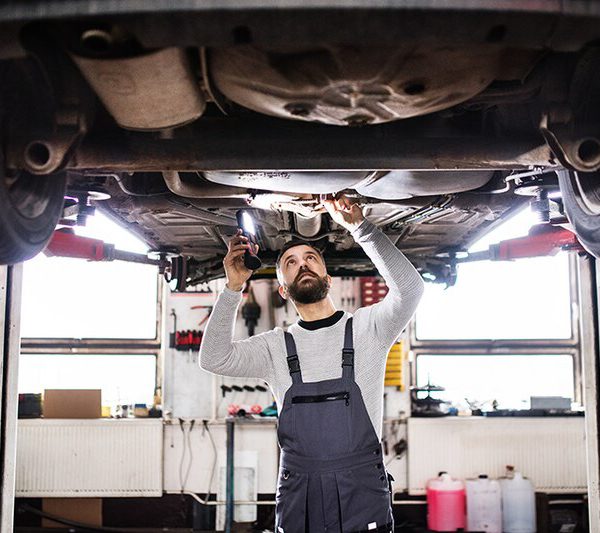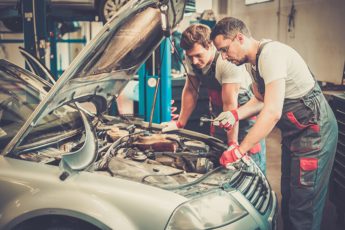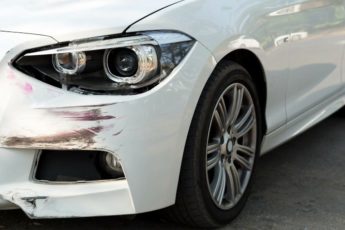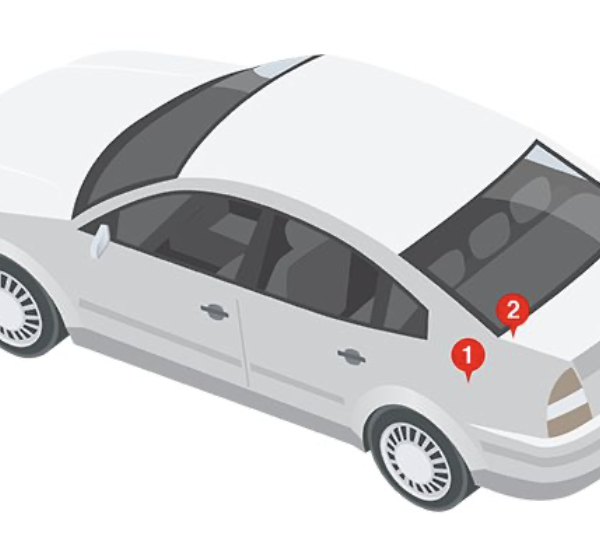When To Leave Car Repair to The Professionals

When to DIY or Leave to the Professionals
Your car is a complex machine with somewhere around 30,000 parts, so it’s no wonder that you might be a bit reluctant to make repairs. However, you would be amazed at how many tasks you can do yourself with the bare minimum of skills. As long as you can follow directions and use some basic tools, you can take on many car-related tasks without the help – or expense – of a professional mechanic. Take a deep breath, put your trepidations aside and find out just how much you are capable of doing.
The Tools You Will Need
Before you dive in, don’t get stressed out about buying every specialized gadget at the auto parts or hardware store to make these repairs. Most of them can be accomplished with the following:
- Socket and ratchet set
- Adjustable wrench
- Torque wrench
- Flat head and Phillips screw drivers
- Automotive touch up paint
- Jack
- Pliers
These days, there is one more device that is absolutely indispensable: a laptop or mobile phone that you can take outside with you while you work. With just a few taps, you can access how-to videos on virtually any vehicle-related job. Plus, you can take pictures of your progress to share with friends and listen to your favorite tunes while you work.
Replacing Windshield Wipers
Having wipers that perform optimally can improve your ability to see even in the stormiest of conditions. Sometimes, all that needs to be done is to change out the worn-out rubber strips on your current wipers with new ones. However, it’s just a matter of using a screwdriver to remove your old windshield wipers when the time comes to get a different set.
Flushing Your Radiator
After four or five years or after driving 40,000 to 60,000 miles, you should change the coolant in your radiator. It’s a good way to keep your engine performing efficiently. After your car has totally cooled down, you can drain your dirty fluid into a two-gallon bucket. Uncap the radiator, and unplug the drain. Release the valve on the underside of your radiator and let all of the fluid drain out. Clean with radiator cleaner and distilled water, repeating until the solution runs clear. Use a 50/50 mixture of distilled water and antifreeze, filling the radiator up to the fill line. Start your car and blast the heat to be sure that all of the antifreeze goes through the engine. Then replace the pressure cap. In another 15 minutes, remove the cap and top off the solution if it is no longer at the fill line. Store any remaining fluid in a labeled bottle for the next time.
Replacing Headlight Bulbs
As long as your car doesn’t have sealed beam headlights, it’s quite easy to change the bulbs yourself. Just be sure you buy the ones that will work with your make and model of car.
Replacing Fuel Gauge Sender
If you seem to constantly be running low on fuel, it could be caused by a malfunctioning fuel gauge sender. Generally, this gizmo is located under one of the seats. Check your owner’s manual to learn where it is in your vehicle. If it’s accessible, switching out your old one might solve your problem.
Address Those Blown Fuses
When your headlights are out, it doesn’t necessarily mean that you need to replace the bulbs. Another possibility is that you have blown a fuse. Check your car’s fuse box and replace any blown fuses you find. There are three types of fuses: ceramic, glass tube and blade. Check your owner’s manual to be sure you purchase the proper replacements.
Replace Seat Belts
A broken or malfunctioning seat belt can endanger you or your passengers. If it is in the front seat, you are legally required to have working seat belts. Replacing the belts and retractors only requires a screwdriver to remove the covers and replace them with new ones.
Replacing Window Belt Strips
If the rubber strips that seal your windows are cracked or torn, water can get into your car and cause damage. They are inexpensive and easy to replace.
Replacing Drive Belts
The drive belt is made of rubber and is located at the front of your engine. Its purpose is to control functions such as battery charging, air conditioning, power steering and windshield wipers. In newer cars, there is usually just one belt called a serpentine belt that winds its way through all of your car’s systems and components. Older cars may have one belt for each function. You can tell that your belt needs to be replaced if it looks worn or frayed or if you begin to hear a squealing noise when you start the car or try to use one of its accessories. After a visual inspection, you might realize that all that needs to be done is a tightening of your existing belt. But if you think replacement is necessary, consult the internet for a how-to guide.
Replace Your Alternator Or Battery
If you find that your car won’t start or your accessories refuse to power on, you probably have to replace either your alternator or your battery. The alternator is located at the front of your engine, and its function is to work in tandem with the battery to give power to everything electrical in your car. Your battery is the big black box also in the front of your car that supplies power to the alternator. It is connected to your vehicle by means of positive and negative terminals. The best way to determine which of these is the culprit is to use a multimeter to test them. This is a device that checks electrical properties such as current and resistance. Although there are many choices when it comes to multimeters, you should be able to find a basic digital model for under $30. It is worth the investment as it is the easiest and quickest way to learn whether it is your alternator or your battery that is failing. As a side note, it never hurts to give your battery a good cleaning with a mixture of water and baking soda once a year or so. If you make this task a part of your regular annual car maintenance, it will likely prolong the life of your battery.
Replace Your Brake Pads
If you hear a squeak or squeal when you apply the brakes, it’s a sure sign that you need to replace your brake pads. On the other hand, a grinding noise is a signal that you may be having problems with the rotor, which is the disc that is connected to your car’s wheel and to which the brake pads are attached. In the latter case, your best bet as a novice is to bring your vehicle to a professional. However, you can easily replace your brake pads yourself. All you will need is a little time, some tools and a step-by-step instructional video.
Replacing Exterior Hoses
If after driving for awhile you get out of your car and notice a puddle of green, yellow or orange liquid, you are looking at antifreeze that may be leaking from one of your car’s external hoses. Immediately open your hood and look around to see if there is similar liquid coming out of any of the hoses. If there is, it will be quite hot, so don’t touch it. This is an easy fix. All you need to do is let the car cool down. Then unclamp the leaky hose, attach a new one and reinstall the clamp. If, however, you are unable to locate the source of the leak, that may mean that the antifreeze is coming from your radiator. In that case, your best bet is to get your car to a professional.
Replace A Fuel Filter
As its name implies, the fuel filter is designed to keep dust and particles out of your fuel line. Since you will be getting into the gas line, be extra careful and stay away from any flames. Once you get past the fear factor, this is a pretty quick and easy job.
Replace Your Air Filter
This is the device that keeps dust and other particles from getting into your engine. A dirty air filter will cause your car to run less efficiently and get poorer gas mileage. Replacing it is as simple as unscrewing a plastic lid on the side of your engine, removing the old filter, putting in the new one and screwing the lid back on. It doesn’t get much easier than that.
Replace Spark Plugs
Your spark plug is responsible for igniting the gas and air when you start your car. When it fails, you might not pass an emissions test or may begin to have difficulties starting the car.
Replacing Your Distributor Cap
This essential component sends voltage to the appropriate coils and is indispensable in the ignition process. Replace it when you change your spark plugs.
Change Your Oil
When you change your oil regularly – experts recommend that you do so every 3,000 to 7,000 miles – you can keep your engine performing well and minimize contamination. Before you take on this task, however, be sure you know where you can dispose of the old oil. If there isn’t a place near you, perhaps this job would be better done at a shop.
Improve The Appearance Of Minor Scratches
Keeping your car running well is key, but you also want it to look good. If it’s getting a bit beat-up looking due to minor flakes, dents, dings and scratches, don’t despair. You don’t need to spend big bucks at an auto body shop when you can easily buy automotive touch-up paint and do the job yourself. It’s a cinch to match paint colors with the shade of your vehicle; just go online and enter your car’s VIN, make, model and year and order the perfect shade. You can expect to pay about $20 for a small bottle of touch-up paint that can fix about 20 to 25 small dings or chips.
The tools you need include a spot-sander and professional micro-applicators and paint syringes. Before you begin the job, wash the area thoroughly, let it dry and then apply wax and grease remover to the region of the vehicle you will be touching up.
Now take a look at the affected area. If you see any evidence of rust, remove flaking paint and then sand the rusted area first with 300-grit and then 600-grit sandpaper. Remove all debris from the sandpaper with a soft clean cloth, and apply a coat of rust converter. Allow it to dry thoroughly. If the directions call for it, apply a coat of primer although most rust converters also act as primers in their own right.
Skip the above steps if there is no evidence of rust. The appearance of chips can be minimized with the small applicator, which contains just the right amount of paint to cover them. Use several thin coats, allowing each to dry and then sanding before applying the next one. For scratches, put on a continuous coat of paint with the paint syringe. For small dents, you can use a small artist’s brush available at any art store. Another option is to obtain a touch-up paint pen. No matter what option you choose, don’t expect miracles. In other words, your car’s finish will not look exactly like it did when it rolled off the assembly line. However, those ugly dings, bumps and scratches can be made a lot less visible with touch-up paint.
You spend a lot of time in your car, and it says a lot about you. So take a little time to give it the tender loving care it needs. In many cases, you don’t need to break the bank or even consult with a mechanic. Just take your time, get online tips from the experts and, most important, have fun. There is nothing that beats the feeling of accomplishment you will experience when you face your fears and do a great job.

 Cart
Cart
 Help Desk
Help Desk






